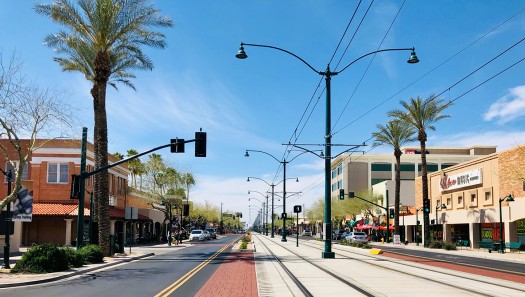A Placemaking Journal
Code Score: A New Aid for aligning policy and vision with outcomes
Whether we’re talking equity, affordability, jobs, health, or a list of other pressing topics, every community strives for more effective outcomes from policies to address a broad range of competing demands. The fact that the demands – and the strategies to address them – are competing for time and resources is its own problem, especially in an era of diminishing trust in cities’ and towns’ capacities to deliver on the collective local vision.
There’s hope, though, in what we’ve learned about bonuses that come with protecting and expanding compact, mixed-use neighborhoods that aren’t auto-dependent. Here’s a fundamental epiphany: The challenges are interconnected. And so are the solution paths.

Mobility options are factors in affordability, for instance. The same goes for mental and physical health outcomes, since walkable and bikeable communities reduce transportation expenses and increase daily exercise. And there’s a growing body of research suggesting a similar bonus for job creation in urban environments that attract workers and employers. For policymakers, that puts a premium on using planning tools – zoning, for instance – that help their communities capture the advantages of quality urbanism.
It would be super helpful, would it not, if there was one space on the crowded internet to help us visualize the path between community vision and the strategies and tools for capitalizing on urbanism’s bonuses? And wouldn’t it be great if such a resource also provided a ton of high-quality research to back up the pitch for prioritizing such strategies?
Welcome to Code Score.
Code Score consolidates 135 peer reviewed studies that link urban form to paybacks to health, safety, welfare, and the environment under the categories of people, planet and profit. Then these impacts are grouped by how drivers affect indicators for high-functioning zoning codes.
Our work on “high-functioning codes,” together with that of other urbanist teams, has been focused on the development, refinement, and customization of form-based codes and other codes that spark livability. Unlike conventional zoning that seeks to regulate the uses of buildings, form-based codes guide the look and feel of public space bounded by buildings – including streets, sidewalks, building frontages, and setbacks. Form-based codes are regulatory tools designed from the beginning to shape an urban ecosystem likely to deliver the comprehensive benefits outlined above.
The new Code Score effort is intended as a compliment to deeper dives into the evolution of codes that enable livability on Codes Study and Project for Code Reform, for instance. The site provides an open-source platform that will grow richer in value as planning practitioners and researchers contribute to the content.
Check it out.
–Hazel Borys
If PlaceShakers is our soapbox, our Facebook page is where we step down, grab a drink and enjoy a little conversation. Looking for a heads-up on the latest community-building news and perspective from around the web? Click through and “Like” us and we’ll keep you in the loop.










